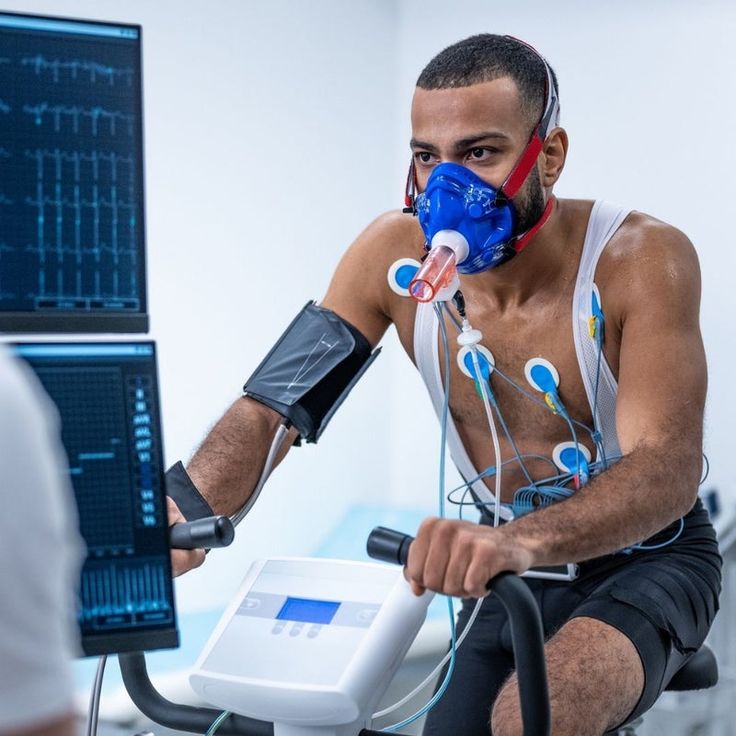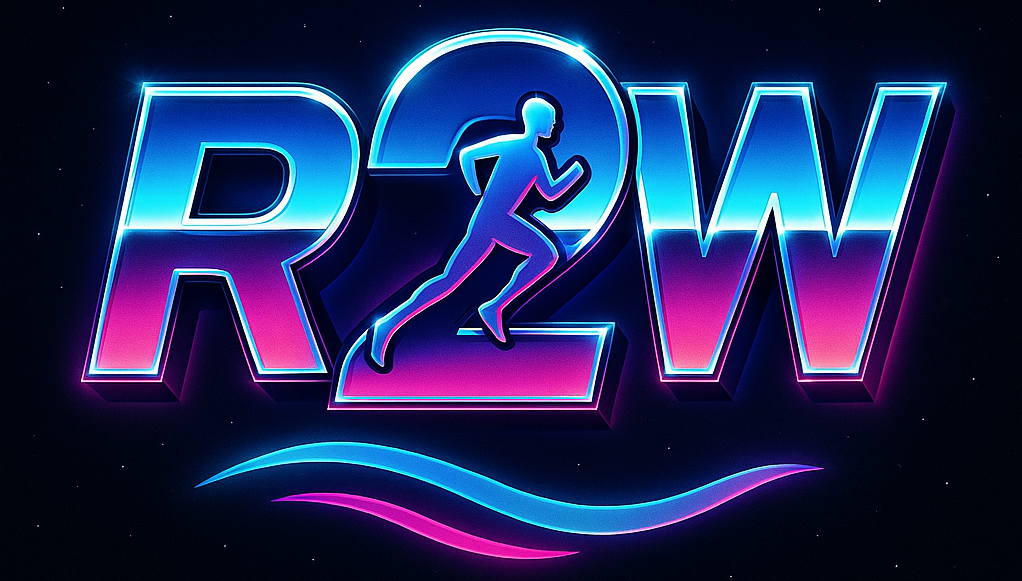![]() Strong muscles, a clear mind, and springy joints are always nice to have, but as I get older, 58 years young to be exact, I’m starting to focus on a few things that hadn’t really caught my attention before. I keep seeing experts talk about two important things that show how well you’re aging and might even tell you how long you’ll live. The first one is grip strength, which I’ll save for another article (Want To Live Longer? Your Hands Might Hold The Secret). The second one is VO2 max, and that’s what I’m going to get into here. VO2 max gets more important as the years roll by, so let me share what it is, why it matters so much as you age, how it changes over time, and how I keep mine on track.
Strong muscles, a clear mind, and springy joints are always nice to have, but as I get older, 58 years young to be exact, I’m starting to focus on a few things that hadn’t really caught my attention before. I keep seeing experts talk about two important things that show how well you’re aging and might even tell you how long you’ll live. The first one is grip strength, which I’ll save for another article (Want To Live Longer? Your Hands Might Hold The Secret). The second one is VO2 max, and that’s what I’m going to get into here. VO2 max gets more important as the years roll by, so let me share what it is, why it matters so much as you age, how it changes over time, and how I keep mine on track.
There’s a lot you might want to keep an eye on as you get older, like your weekly mileage, resting heart rate, and even your sleep routines. But are you tracking your VO2 max? VO2 max is the ultimate fitness stat, even more important in your fifties, sixties, and beyond.
What Is VO₂ Max and Why Should You Care?
VO2 max sounds pretty technical, but all it means is the maximum amount of oxygen your body can use while you’re working hard. It’s usually measured in milliliters of oxygen per kilogram of body weight per minute (ml/kg/min). Scientists and coaches love it because it sheds light on how strong your heart and lungs are, and how efficiently your muscles can use oxygen. The higher your VO2 max, the better your stamina for running, cycling, hiking, or even climbing a few flights of stairs.
Most people think of VO2 max as something only pros or hardcore runners need to worry about. I used to think that myself. Turns out, keeping your VO2 max up as you age isn’t just for athletes. It’s one of the best predictors of long, healthy years. I’ve seen studies that link a solid VO2 max score with a lower risk of heart disease, less chance of diabetes, and even better brain health (source).
VO₂ Max Naturally Drops With Age (But You Can Push Back)
Here’s something that surprised me: after age 30 or so, most people’s VO2 max starts to fall by about 1% per year. It happens because our heart pumps a little less blood each beat and muscles get less efficient at grabbing oxygen. I noticed it myself as soon as I hit my forties. Tough runs started to feel just a bit harder, even though my effort level hadn’t changed.
That might sound discouraging, but the good news is you can do a lot to slow this down. Staying active and switching up your training can help you hold onto much more of your VO2 max than someone who lets exercise slide. Those small improvements here can mean bigger, lasting gains for healthy years down the road. Even seeing a slow drop can motivate you to put in those smart workouts that keep you feeling young.

Pushing my limits with tough runs at 70% max effort brings a surge of energy, strengthens my health, and contributes to a longer, more vibrant life. The joy of still challenging myself is a huge bonus!
VO2 Max By Age Chart: How Do You Compare?
Wondering where you stack up? Here’s a breakdown of average VO2 max values for both men and women. Your personal number can bounce around based on lifestyle, genetics, and health, but this gives you a starting point.
| Age | Men (ml/kg/min) | Women (ml/kg/min) |
|---|---|---|
| 20-29 | 38-51 | 30-43 |
| 30-39 | 36-48 | 28-40 |
| 40-49 | 34-45 | 26-37 |
| 50-59 | 30-42 | 24-35 |
| 60-69 | 27-39 | 22-32 |
If you have your latest VO2 max score, compare it to the chart. If you’re in the lower range, don’t stress; it’s just a starting point. There’s plenty you can do to raise your number, and improvements happen faster than you expect if you stick with it.
Three Things I Do To Keep My VO₂ Max Strong
I’ve tried a bunch of routines over the years, but these three habits are what keep my VO2 max where I want it, even as the birthdays stack up. Sticking to them also helps you stay motivated and keeps your routine from getting stale:
Mix It Up: Variety Works Wonders
- Intervals and Hills: Doing short, tough intervals and tackling hills wakes up your heart, lungs, and legs. I usually add a few 30-second sprints or find a slope to charge up. It’s not about speed, it’s about the effort. These workouts send your body a signal to keep building that fitness base.
- Strength Training: It’s not just about cardio. Lifting weights or using body weight keeps muscles strong and helps you use oxygen more efficiently. I include short strength sessions twice a week. A mix of squats, lunges, planks, and pushups goes a long way for full-body benefits.
Zone 2 Runs: The Easy Secret
- Zone 2 means moving at a pace where you can still chat, about 60-70% of your max heart rate. It doesn’t feel intense, but this is where the magic happens. These easy runs help you build a stronger aerobic engine by creating more mitochondria—your cells’ energy makers—and tiny blood vessels in your muscles. I make these my bread and butter a few times a week, and it really pays off by making those tougher efforts feel easier.
The 80/20 Rule: Don’t Burn Out
- I used to think more hard workouts meant better results, but that quickly led to burnout. Sticking to the 80/20 rule, keeping 80% of workouts easy and just 20% tough, lets you bounce back and keep seeing progress. This balance is especially important as you get older and recovery takes a little longer.
An exercise physiologist I trust summed it up: “Stay active, and you’ll hold onto your VO2 max a lot longer than you think.” A regular mix of different workouts really matters, giving you a sort of insurance policy against too much decline.
How To Track Or Improve Your VO₂ Max
Back in the day, testing your VO2 max meant lab visits and pricey masks. Now, fitness watches and apps can put out a decent estimate. I use my Garmin, which tracks workouts, heart rate, and fitness level to give me a ballpark. Not perfect, but still useful. Even if you don’t want new tech, regular brisk walks, bike rides, or swim sessions help you get ahead of the curve.
There are plenty of training programs and free resources to help improve VO2 max. Jump into interval workouts from Runner’s World or look up zone 2 aerobic plans to get started. Many apps now offer structured workouts that keep things fresh, along with tracking tools so you can see your progress week by week.
Staying Strong For The Long Haul
You don’t have to run marathons or live in the gym to benefit from a healthy VO2 max. The real win is being able to chase after grandkids, hike up new trails, or just have more energy for daily life. The routines I’ve picked up in my fifties and late fifties, mixing up workouts, easy aerobic sessions, and letting my body recover, have paid off with more stamina and a longer healthspan. Finding your VO2 max is just the first step; making a few tweaks to keep it steady is where you’ll get the biggest payoff. Plus, working toward a better VO2 max supports your heart, helps manage glucose, and might even boost your mood and mental sharpness.
So, what’s your VO2 max story? If you know your number, drop it in the comments below and share what’s working for you. Here’s to feeling stronger for longer and turning back the biological clock, one workout at a time. Staying consistent and switching in a little variety will help you keep making progress, and it’s never too late to start.

